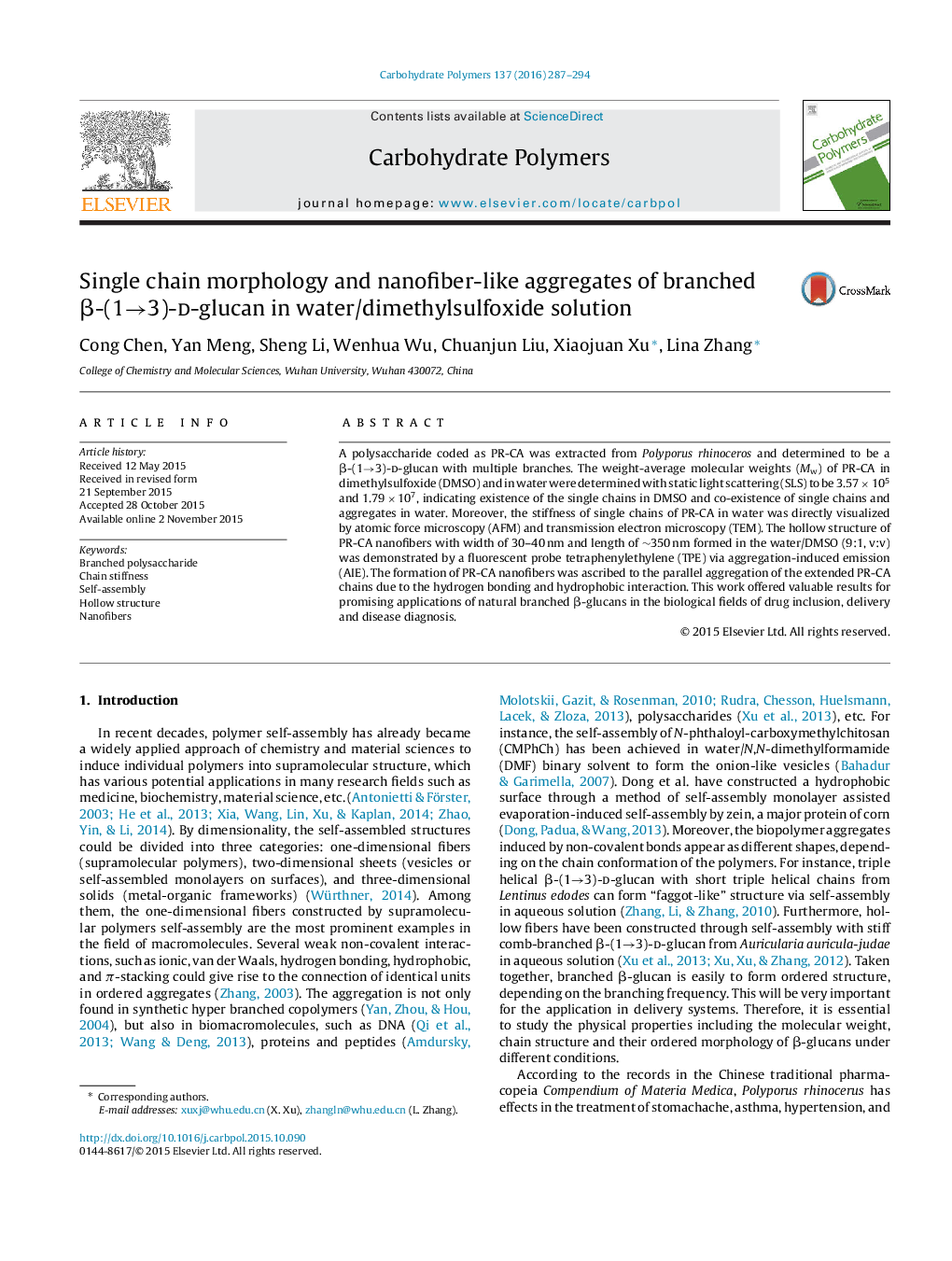| Article ID | Journal | Published Year | Pages | File Type |
|---|---|---|---|---|
| 1383167 | Carbohydrate Polymers | 2016 | 8 Pages |
•PR-CA was characterized to be a β-(1→3)-d-glucan with multiple branches.•The chain stiffness of PR-CA in water was directly visualized by AFM and TEM.•The aggregation behavior of PR-CA was studied in water/DMSO solutions.•The branched PR-CA chains took parallel aggregation to form hollow nanofibers.
A polysaccharide coded as PR-CA was extracted from Polyporus rhinoceros and determined to be a β-(1→3)-d-glucan with multiple branches. The weight-average molecular weights (Mw) of PR-CA in dimethylsulfoxide (DMSO) and in water were determined with static light scattering (SLS) to be 3.57 × 105 and 1.79 × 107, indicating existence of the single chains in DMSO and co-existence of single chains and aggregates in water. Moreover, the stiffness of single chains of PR-CA in water was directly visualized by atomic force microscopy (AFM) and transmission electron microscopy (TEM). The hollow structure of PR-CA nanofibers with width of 30–40 nm and length of ∼350 nm formed in the water/DMSO (9:1, v:v) was demonstrated by a fluorescent probe tetraphenylethylene (TPE) via aggregation-induced emission (AIE). The formation of PR-CA nanofibers was ascribed to the parallel aggregation of the extended PR-CA chains due to the hydrogen bonding and hydrophobic interaction. This work offered valuable results for promising applications of natural branched β-glucans in the biological fields of drug inclusion, delivery and disease diagnosis.
